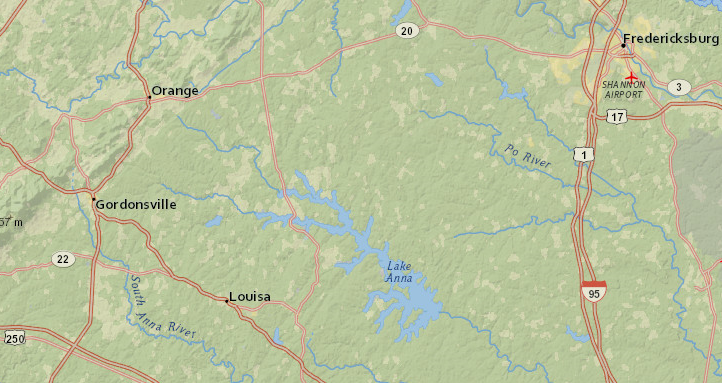
Lake Anna was created in 1971 by damming the South Anna River
Source: ESRI, ArcGIS Online

Lake Anna was created in 1971 by damming the South Anna River
Source: ESRI, ArcGIS Online
Lake Anna is a 9,600-acre artificial reservoir that filled in 1972. Portions of it are located in Louisa, Orange, and Spotsylvania counties.
The lake was created to provide cooling water for the nuclear power plant constructed by the Virginia Electric Power Company (VEPCO), now known as Dominion Energy. The dam that created the reservoir blocked the South Anna River, west of Interstate 95.
The non-native plant Hydrilla vertricillata became a problem in the 1980's, clogging boat motors and affecting the efficiency of the cooling system at the power plant. The electric utility used a biological approach to reduce the Hydrilla within its Waste Heat Treatment Facility ponds. It introduced triploid (sterile) grass carp, which graze on the aquatic plant. Enough carp have escaped into the main lake to reduce the Hydrilla problem there as well. Carp populations are declining, and most are adults over three feet long now.1
Water entering the lake on the south side has been heated in the Lake Anna nuclear power plant, as it cools the team boilers that generate electricity. Discharge into the lake creates a "hot side" on the southern edge of Lake Anna. The "hot" refers to just the temperature of the water; there is no additional radioactivity in it. In the cooling process, that water has never passed through the nuclear reactors at the North Anna Power Station.
The lake traps nutrients that wash off farm fields and homeowner lawns in its watershed, and experiences algal blooms in the warm months. The Virginia Department of Health issues swimming advisories where it has identified potentially harmful levels of cyanobacteria in the water, which can create irritating compounds or toxins.
The blooms in Lake Anna occur in the coves, where shallow water gets warmest and circulation is minimal. The discharge from the nuclear plant is thought to minimize the blooms because it creates a current, mixing water from different levels in the lake and diluting the nutrients. Algal blooms in five successive years caused the Virginia Department of Environmental Quality (DEQ) to add Lake Anna to the list of impaired waters that do not meet Clean Water Act Standards (the "dirty waters list") in 2022.2
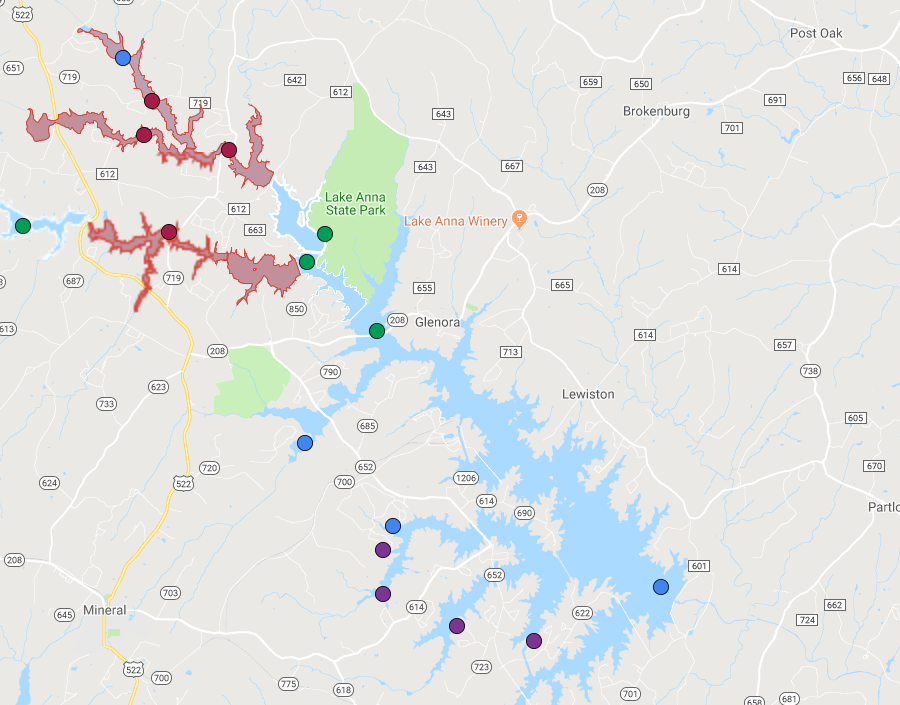
in August 2019, multiple parts of Lake Anna experienced algal blooms (red = area under swimming advisory)
Source: Virginia Department of Health, Algal Bloom Surveillance Map
In 2020, a health advisory was issued for the Middle Pamunkey Branch of Lake Anna, the Upper Pamunkey Branch, Terry's Run, and the Upper North Anna Branch. The amount of cyanobacteria (once known as "blue-green algae") exceeded exceed safe levels for swimming or even paddleboarding. Health advisories recommending people to avoid contact with some part of the lake were issued for four years in a row between 2018-2021.3
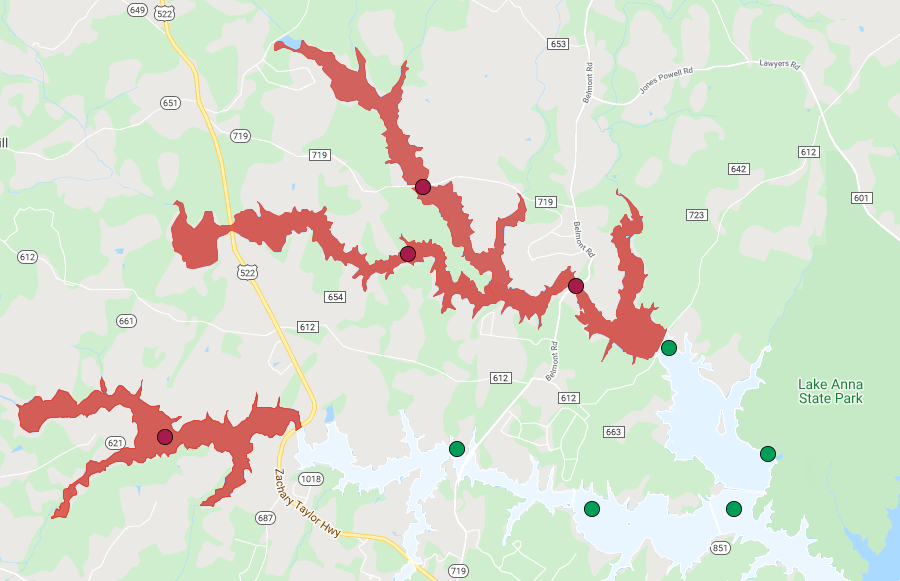
in August 2020, a swimming advisory (red area) was again issued due to harmful algal blooms
Source: Virginia Department of Health, Harmful Algal Bloom (HAB) Map 2020
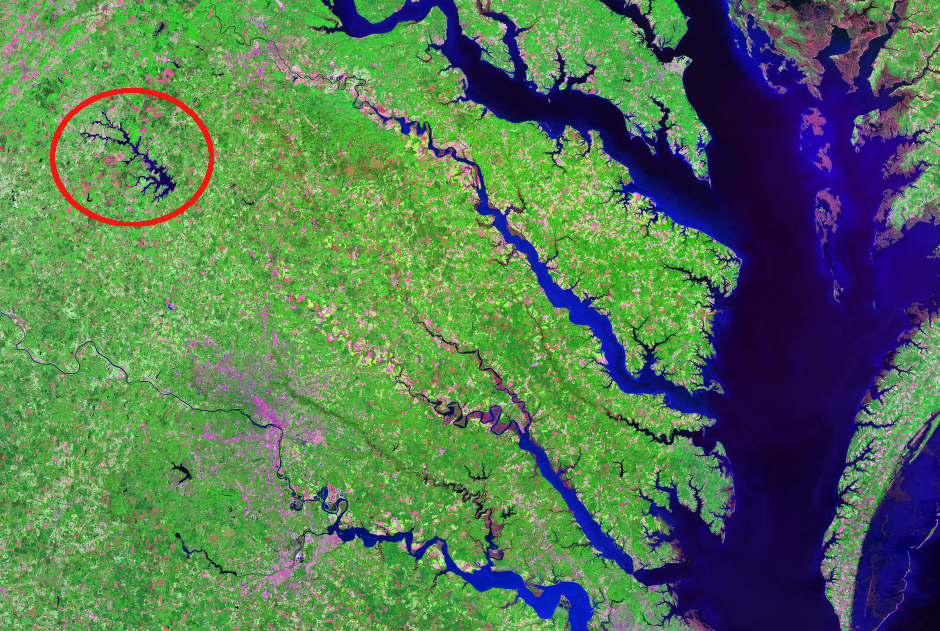
Lake Anna, on the North Anna River in the York River watershed
Source: NASA - Stennis Space Center
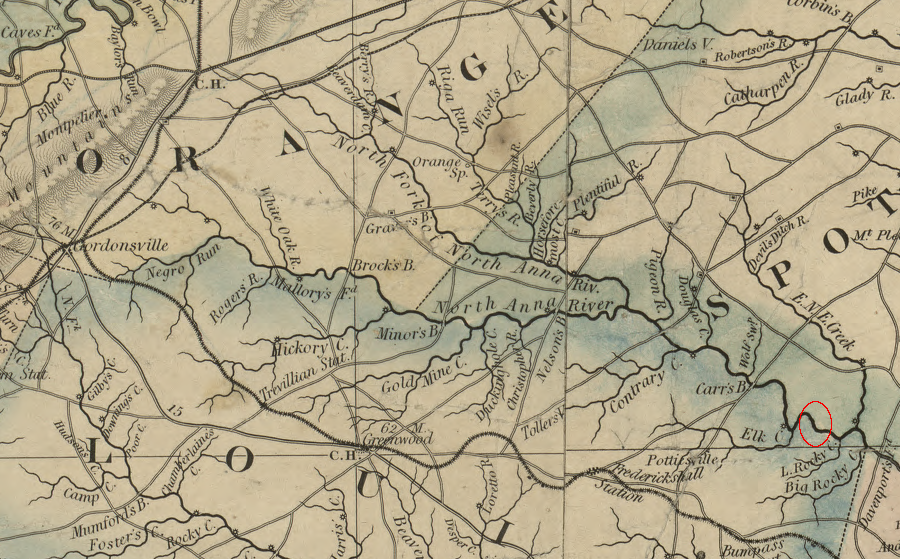
when Virginia Electric and Power Company constructed a dam on the North Anna River in 1972 (site circled in red) and created Lake Anna, the confluence of the river's two forks was drowned
Source: Library of Congress, A map of the state of Virginia, constructed in conformity to law from the late surveys authorized by the legislature and other original and authentic documents (1859)

Dominion's North Anna nuclear power plant discharges warm water into Lake Anna through the third dike, next to the dam
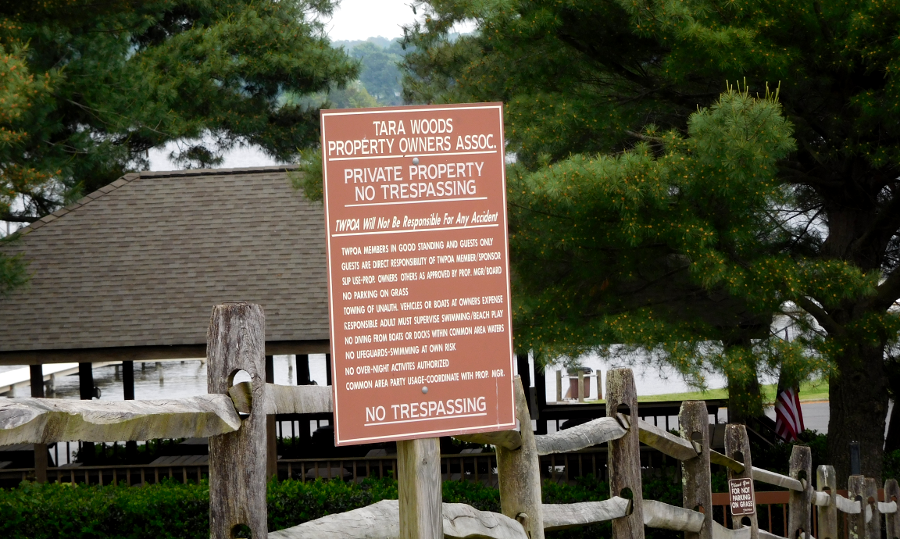
on the south side of Lake Anna, the portion used to cool warm water is used by waterfront property owners and Dominion employees - but that part of the lake has no access points or marinas open to the general public
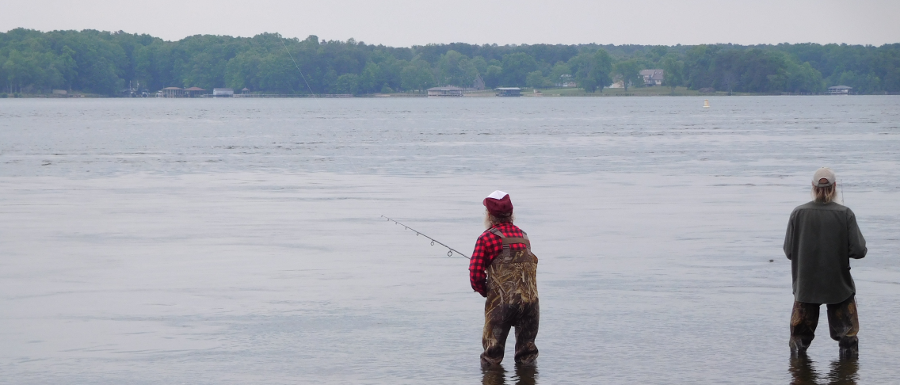
the Virginia Department of Game and Inland Fisheries has a boat ramp and public access for fishing at the third dike, where warm water that has completed the required cooling process enters Lake Anna
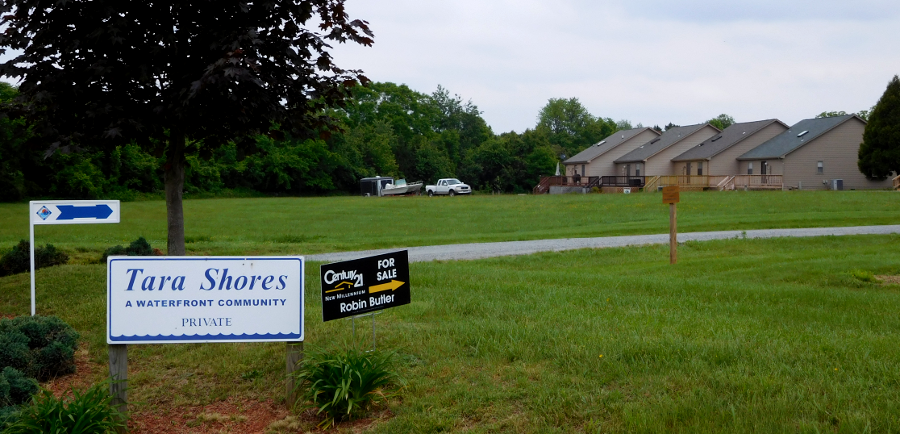
Lake Anna created a demand for real estate with water access in Spotsylvania and Louisa counties
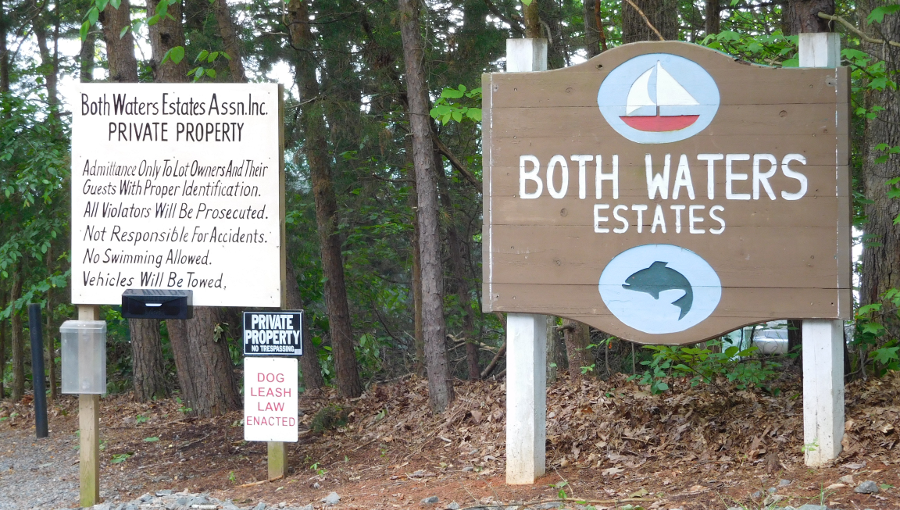
owners of lots not directly on the waterfront get water access through properties owned by community associations

lots around Lake Anna often have boats in garages or shelters
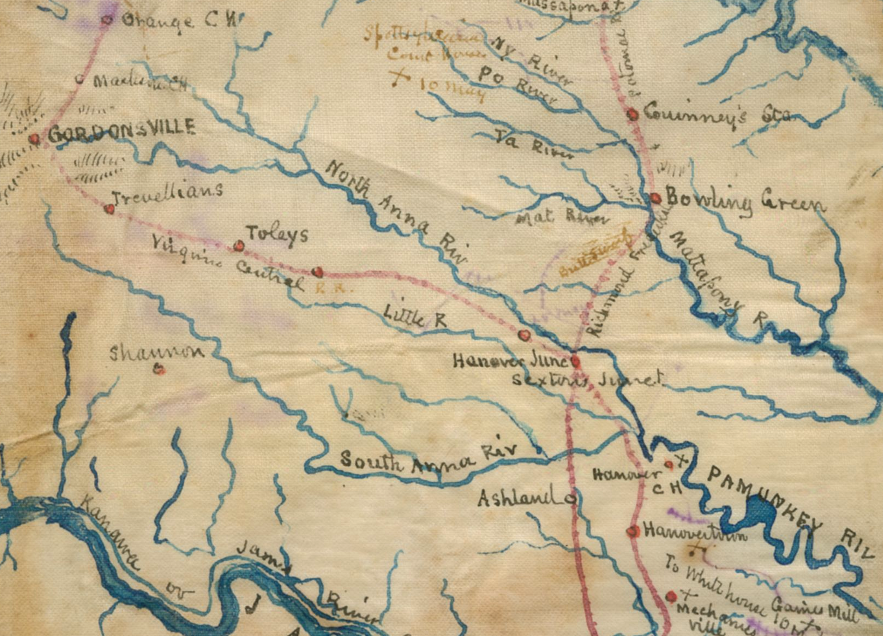
the North Anna River was a factor in General Grant's 1864 Overland March to Richmond
Source: Library of Congress, Fredericksburg to Petersburg, VA (by Robert Knox Sneden, c.1863)
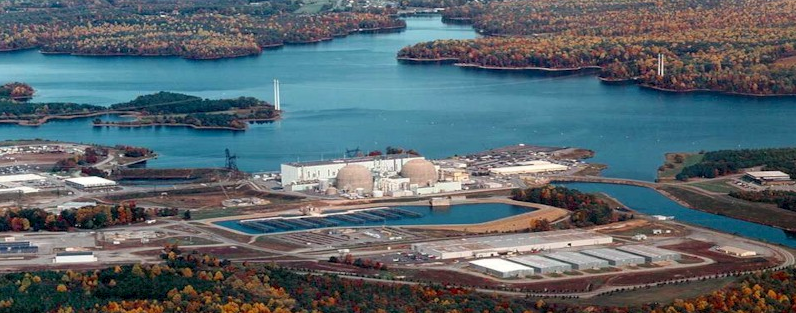
Lake Anna River was created to cool the North Anna nuclear power plant
Source: Dominion Virginia Power, North Anna Early Site Permit Application (Figure 3.1-1)
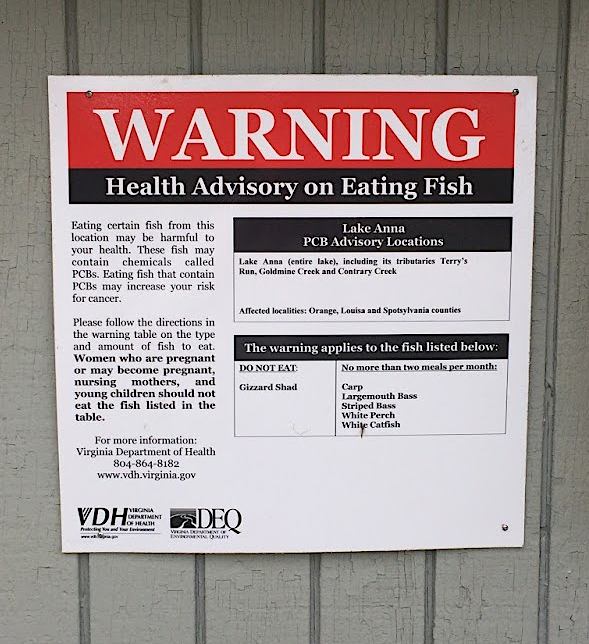
water quality at Lake Anna is impaired
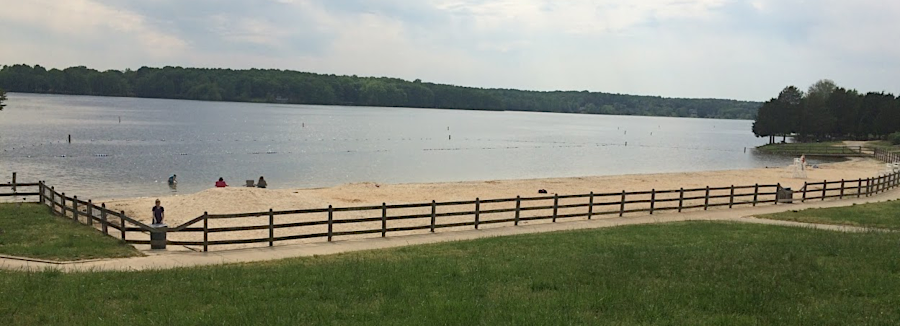
swimming area and artificial beach at Lake Anna State Park
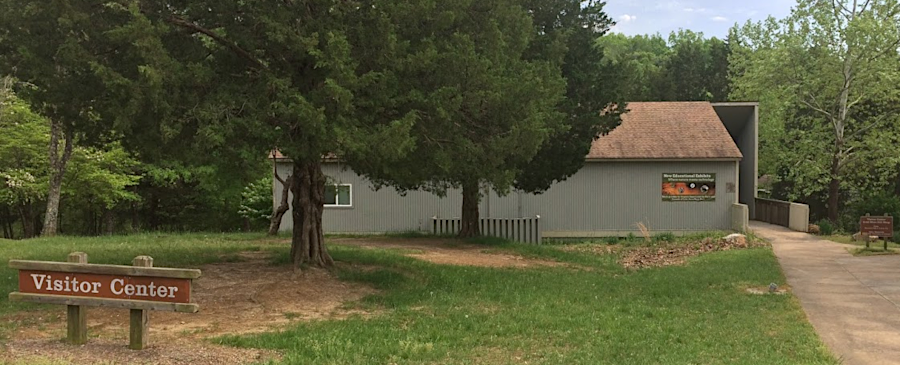
Visitor Center at Lake Anna State Park
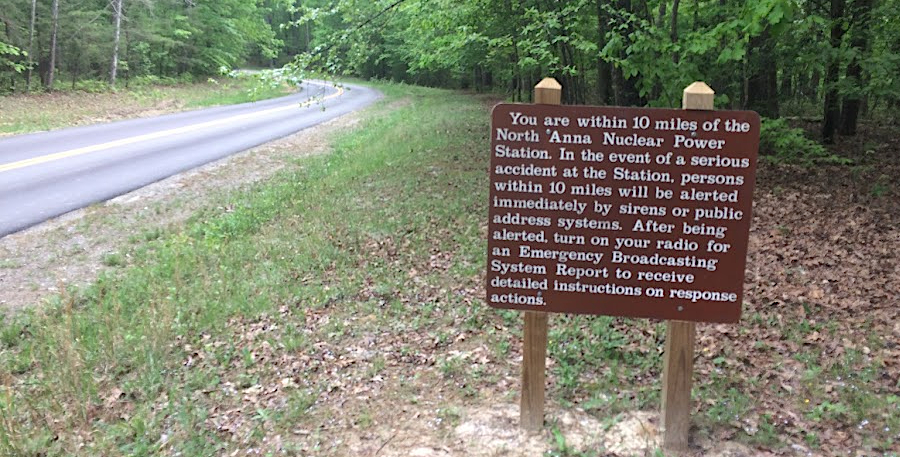
visitors entering Lake Anna State Park are reminded that the lake was created to cool a nuclear power plant
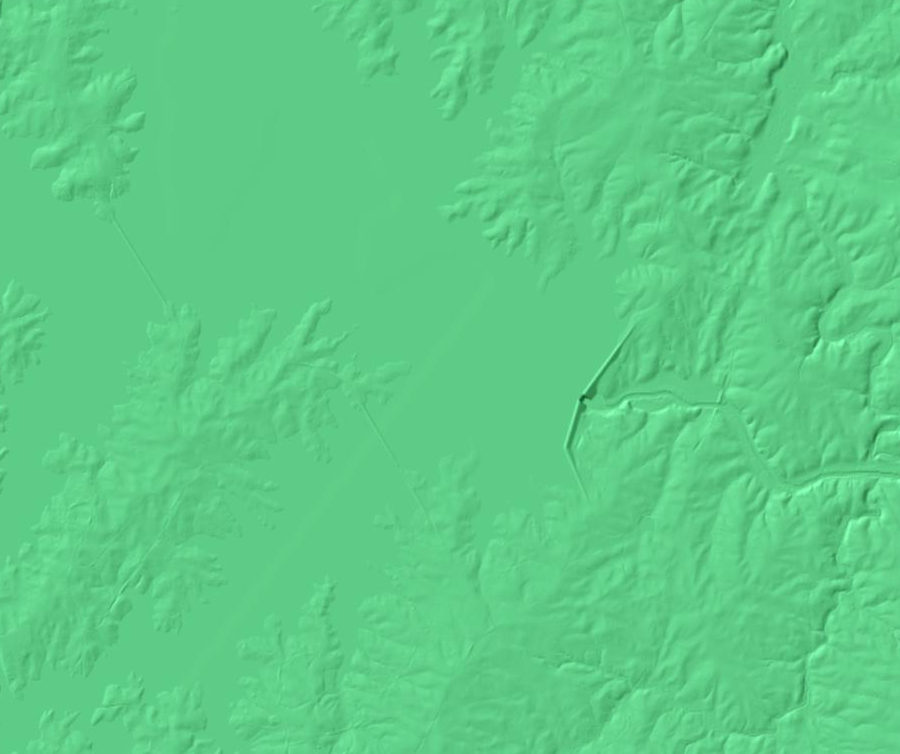
a Digital Elevation Model (DEM) shows how the topography of the North Anna River valley has been drowned upstream of the dam
Source: US Geological Survey (USGS), National Map - DEM Viewer